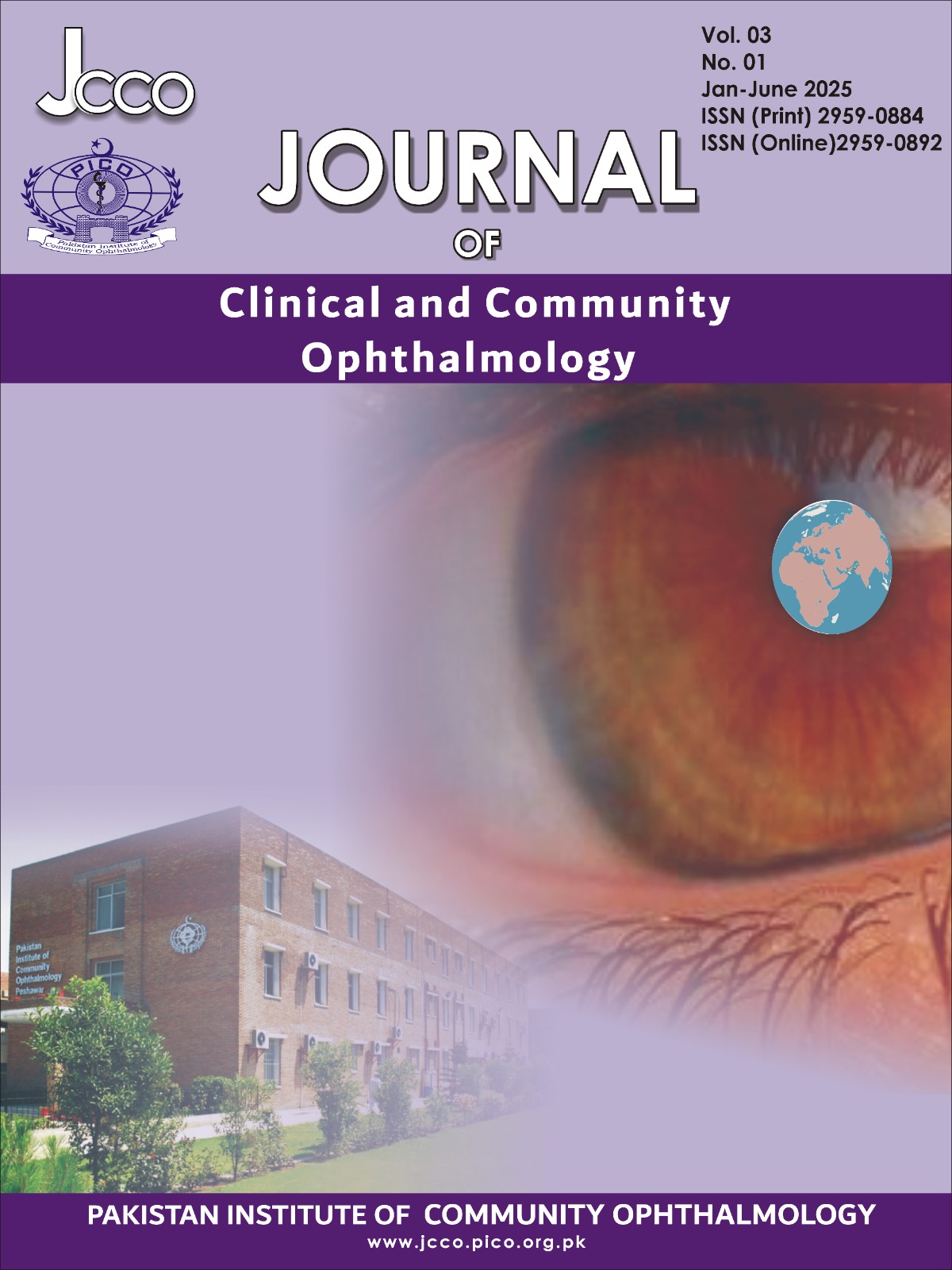Assessment of Phoria Associated with Myopia in Students and Staff before and after Correction of Refractive Error
DOI:
https://doi.org/10.71177/jcco.v3i01.57Keywords:
Myopia, Esophoria, Exophoria, Refractive ErrorAbstract
Aim: To assess the phoria associated with myopia before and after correction of refractive error.
Study Design: Cross-sectional study.
Duration and Setting of the Study: The study was conducted from March 2023 to August 2023 at the ISRA University Islamabad Campus.
Methods: Using a non-probability sampling technique, students and staff members of the university with myopia ages 18 and above were selected. Ethical approval of the study was obtained from the ethical committee of the Pakistan Institute of Rehabilitation Sciences (PIRS) at ISRA University Islamabad. Verbal consent from the participants was obtained. Data was collected using a self-constructed questionnaire. Assessment of participant was performed using the cover-uncover test, Maddox Rod and Maddox Wing test. Study data was analyzed using the statistical software SPSS 20.
Results: Total participants were 100, including 54% female. Before the correction of refractive error, the mean value for phoria was 1.96 ± 0.84 prism Dioptre (pd) and after correction, the mean value was 1.65 ±0.91 pd. A significant difference was found before and after correction of refractive error (P<0.01). The study showed that without refractive correction, 52% of participants had exophoria, 30% had orthophoria, 14% had esophoria, 02% had hyperphoria, and 2% had hypophoria. While after correction for myopia, 61% of participants had orthophoria, 24% had exophoria, 11% had esophoria, 3% had hyperphoria, and 1% had hypophoria.
Conclusion: The study highlights the significance of refractive correction, especially in treating exophoria. Treatment resulted in a notable shift towards orthophoria. Doing an eye examination, eye care practitioners should consider the prevalence of various ocular disorders and adjust refractive corrections accordingly.
Downloads
Published
How to Cite
Issue
Section
License
Copyright (c) 2024 Saima Ghufran, Kashif Assa, Noreen Mehboob, Abdul Basit, Altaf Hussain, Kashmala Abbasi, Arooba Manahil

This work is licensed under a Creative Commons Attribution-NonCommercial 4.0 International License.






